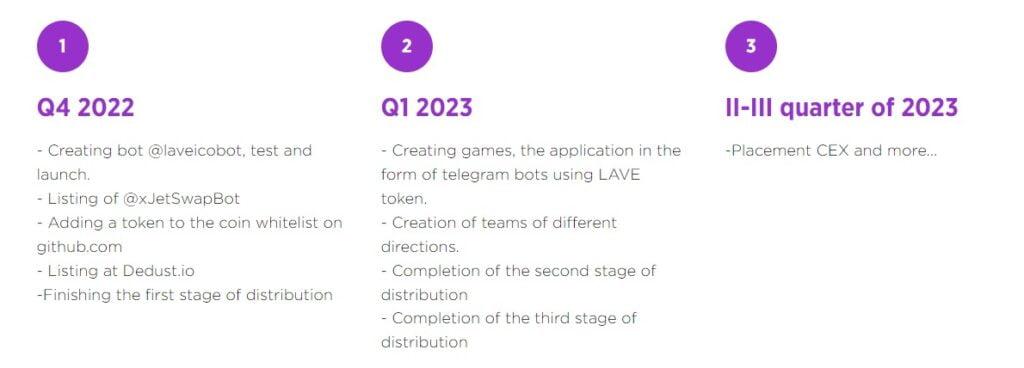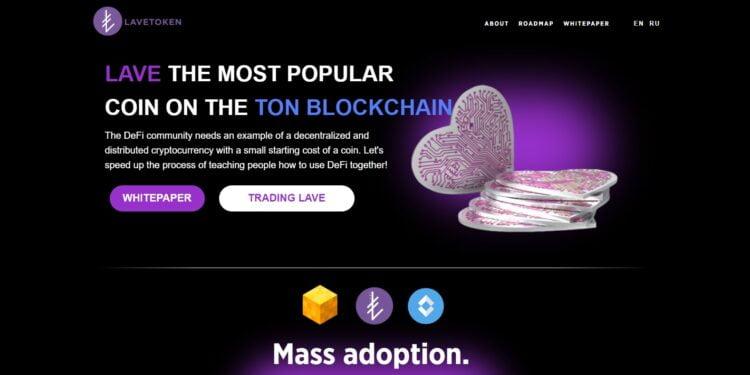Lavandos : In this article, we cover a detailed review of Lavandos Coin. How does Lavandos Crypto work & Are important features?
About Lavandos
Lavandos DeFi community needs an example of a decentralized and distributed cryptocurrency with a low-cost measure of value. In this way, they will speed up people’s learning to use DeFi. Someone would have ideally suited the TON token for this. As a result, the distributed LAVE cryptocurrency across the TON network, so that at least 15,000 active TON addresses will be distributed in the final 73.4%.
This will require spending at least 900 TON-coin. The remaining 26.6% will develop the LAVE token. As a result, the community will have a decentralized, distributed cryptocurrency. The maximum distributed token will not have the risks that FTT had, for example. They eliminate the dangers of strong manipulation. LAVE is needed as an example of a distributed currency and as proof of the thesis.
Lavandos Point Table
| Coin Basic | Information |
|---|---|
| Coin Name | Lavandos |
| Short Name | LAVE |
| Circulating Supply | 4,600,000,000 |
| Max Supply | 4,600,000,000 |
| Official Project Website | Click Here To Visit Project Website |
LAVE Price Live Data
What is LAVETOKEN
LAVE is an alternative coin in the TON network and has almost all of the benefits of Toncoin. The token was created in order to maximize distribution to active users of the TON network. After distributing the coin to the maximum number of users, they will bring more users to DEX. The coin has liquidity and is already traded on the DEX exchange DeDust.IO and tonswap.org
Lavandos Features
Decentralization
The token should be built on a decentralized blockchain network, ensuring that no single entity or authority has control over the token’s transactions or governance. This fosters trust and eliminates the need for intermediaries, enabling users to have full control over their funds.
Distribution
The token distribution should be fair and equitable, avoiding concentration of ownership in the hands of a few entities or individuals. A widely distributed token promotes decentralization and reduces the risk of manipulation or undue influence.
Low Transaction Costs
The token’s network should employ a scalable and efficient consensus mechanism that minimizes transaction fees. High transaction costs can be a barrier to entry for individuals looking to participate in DeFi, so low-cost transactions are crucial to ensure inclusivity and accessibility.
Fast Transaction Confirmations
The token’s blockchain should offer fast confirmation times, enabling quick and efficient transfers of value. This feature enhances the user experience by reducing waiting times and allows for smooth and seamless DeFi operations.
Lavandos Interoperability
The token should be compatible with existing DeFi protocols and platforms, allowing users to seamlessly interact and transfer value across different decentralized applications (dApps). Interoperability encourages the integration of the token into the broader DeFi ecosystem, promoting its utility and adoption.
LAVE timeline

Lavandos Conclusion
Conclusion: DeFi Community would greatly benefit from having access to a decentralized and distributed cryptocurrency offering a cost-effective measure of value. A low-cost token would not only facilitate learning and adoption of DeFi but would also foster inclusivity and accessibility within its ecosystem.
While initially perceived as an ideal fit, TON token development ultimately came to a halt; nonetheless, efforts continue to develop tokens which meet all desired features of DeFi cryptocurrency. DeFi is dedicated to developing an alternative financial system that empowers individuals while giving them greater control of their finances.
Lavandos FAQ
What does the DeFi community need in terms of a cryptocurrency?
The DeFi community is in need of a decentralized and distributed cryptocurrency that offers a low-cost measure of value. This type of cryptocurrency would facilitate faster learning and adoption of DeFi by reducing barriers to entry and making transactions more affordable.
How would such a cryptocurrency benefit the DeFi community?
A decentralized and distributed cryptocurrency with a low-cost measure of value would enhance the accessibility and inclusivity of DeFi. It would enable more individuals to participate in DeFi protocols and platforms, allowing them to leverage the benefits of decentralized finance. Lower transaction costs would also make it easier for users to experiment with different DeFi applications and learn about their functionalities.
Why would the TON token be well-suited for this purpose?
The TON token, which was associated with the Telegram Open Network project, was considered an ideal candidate for meeting the needs of the DeFi community. It aimed to provide decentralization, distribution, and low-cost transactions, making it an attractive option for users seeking to learn and engage with DeFi. However, it is important to note that the TON project was discontinued, and alternative tokens are now being developed to fulfill these requirements.
What are the key features required in a decentralized and distributed cryptocurrency for DeFi?
The desired features for a DeFi cryptocurrency include decentralization, which ensures no central authority controls transactions or governance, and distribution, to avoid concentration of ownership. Additionally, low transaction costs are crucial to encourage widespread adoption and accessibility. Fast transaction confirmations and interoperability with existing DeFi protocols and platforms are also important to provide seamless experiences and enable efficient value transfer.







